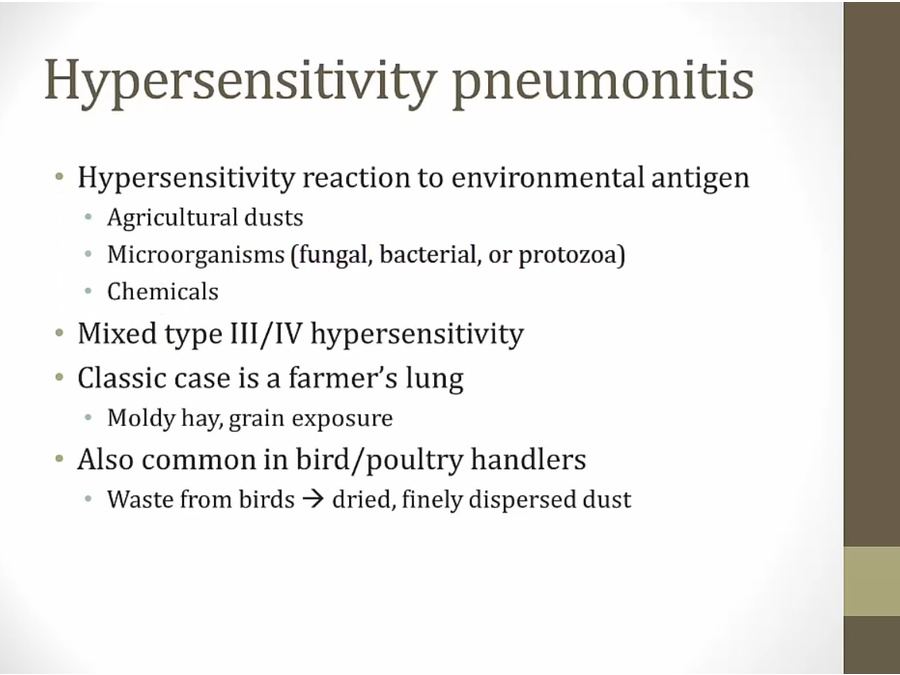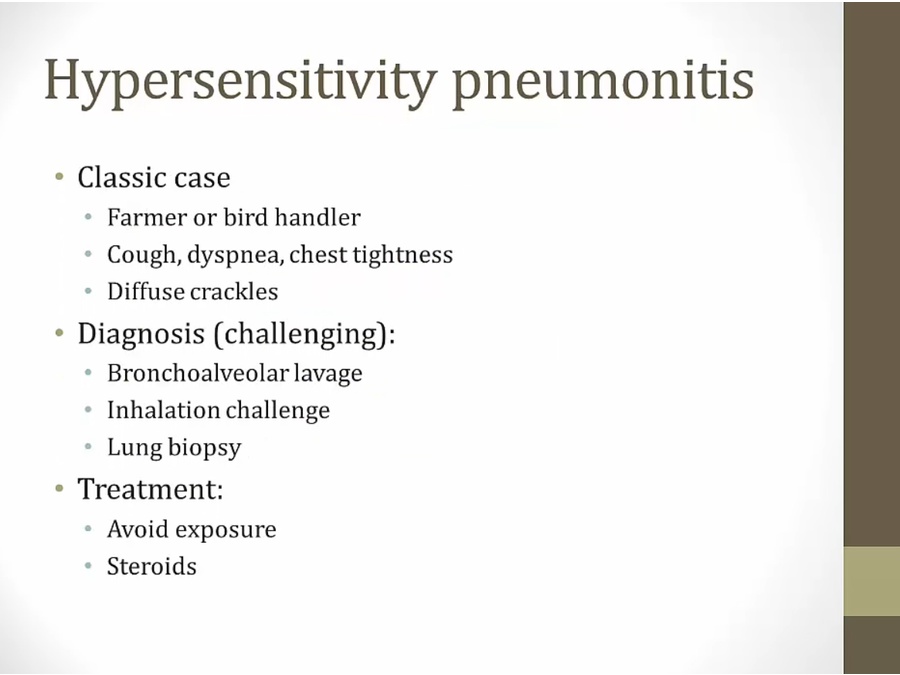11 Restrictive
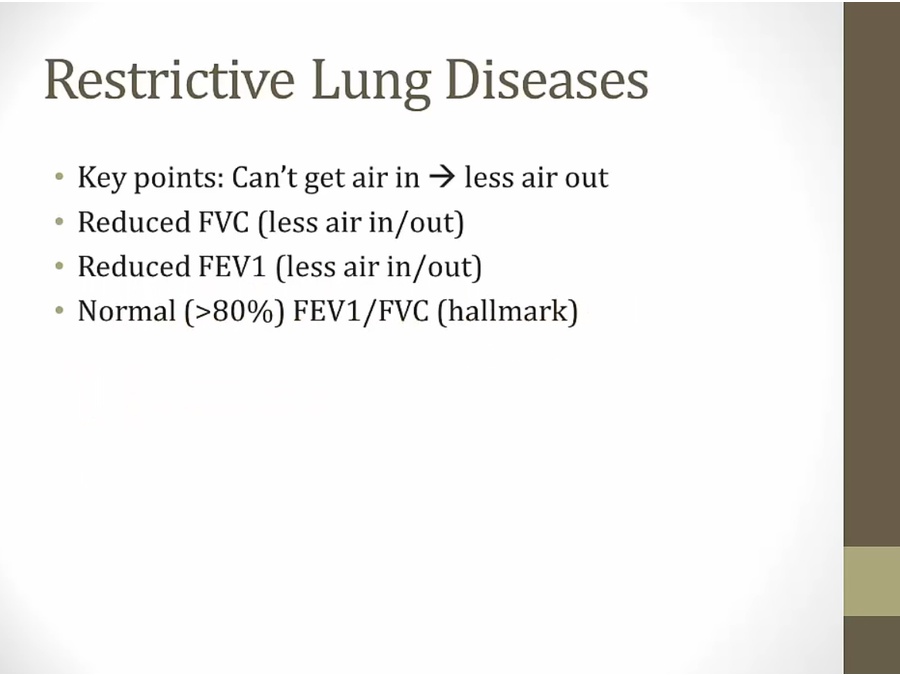
DLCO
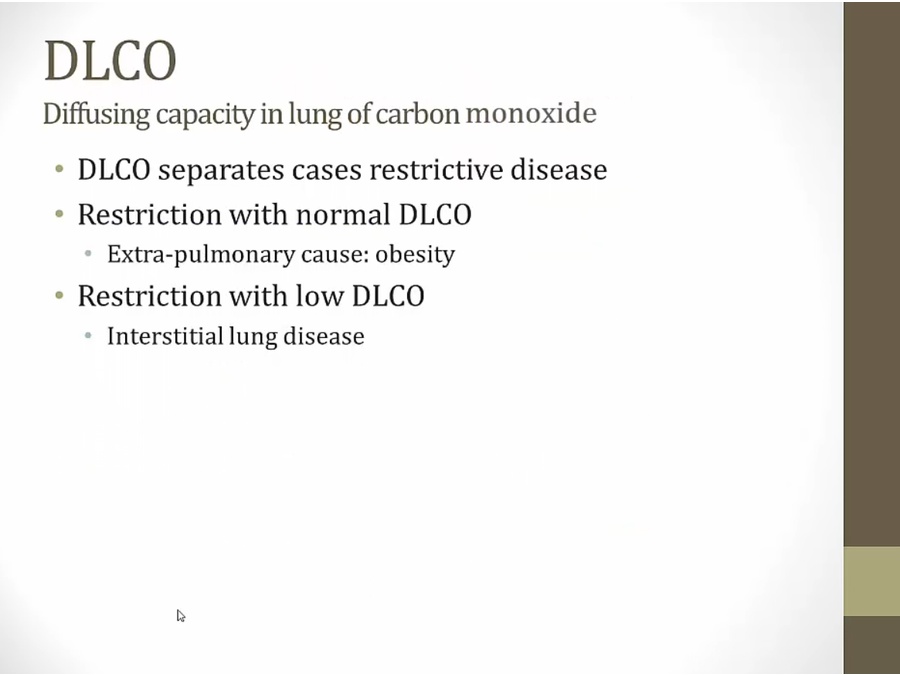
- normal DLCO: alveoli working
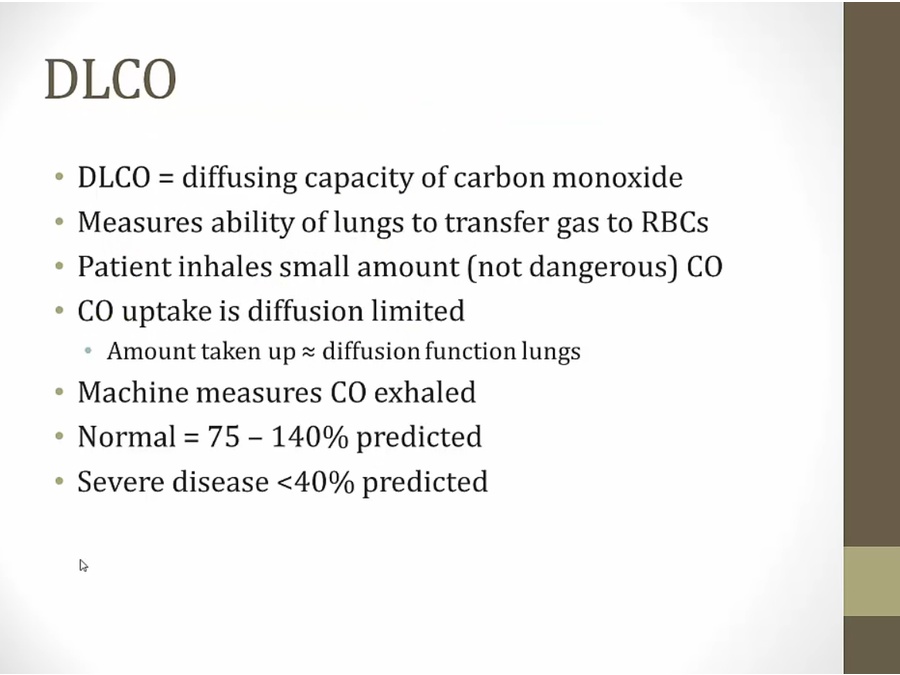
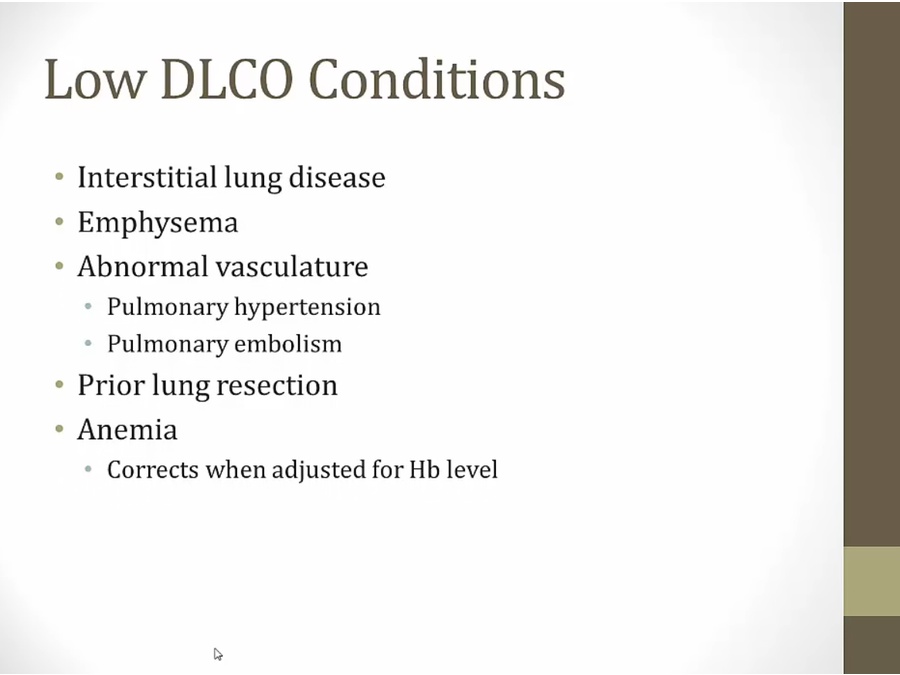
- emphysema: destruction of alveoli, low DLCO
- abnormal vasculature with impaired ability of blood to pick up CO
- lung resection: healthy alveoli, just less
- anemia: not enough RBC to pick up CO
- asthma: high DLCO due to more capillaries
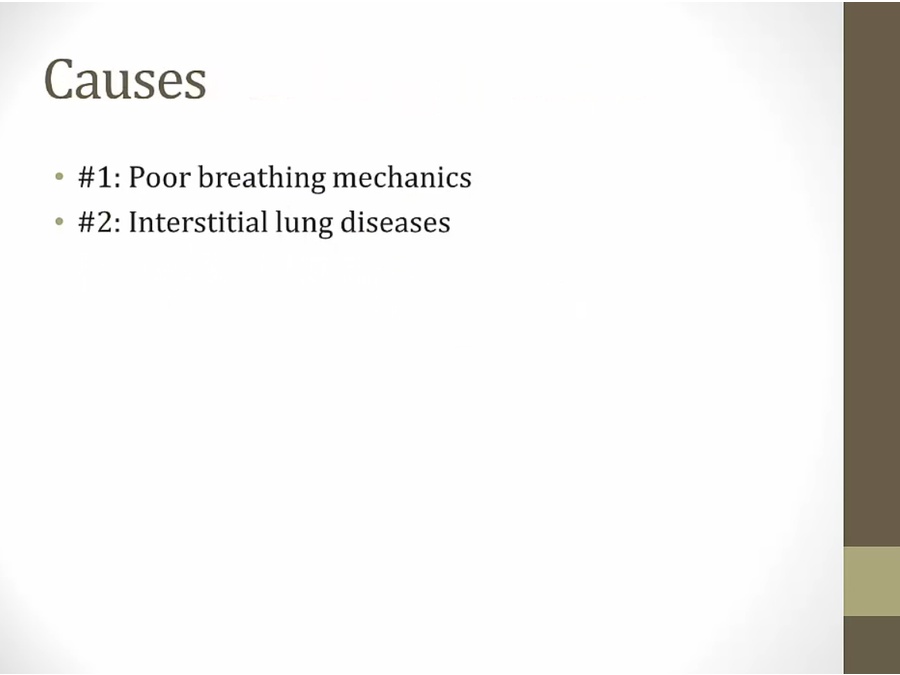
Poor Breathing Mechanics
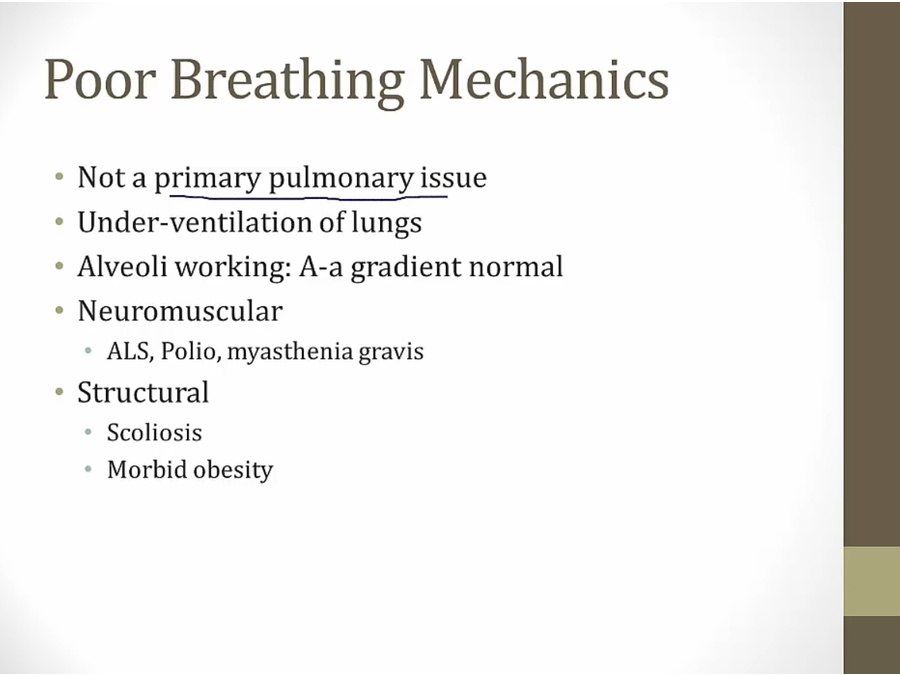
Interstitial Lung Disease
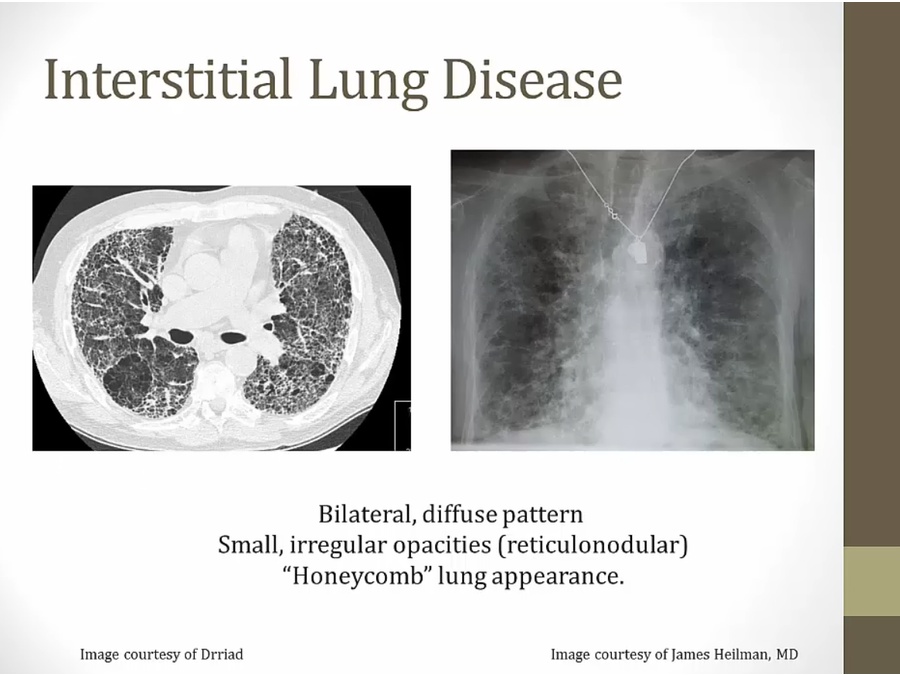
- pathologic process starting in interstitium, misleading because often involves destruction of alveoli
- sticky, fibrous, inflammatory tissue, prevents lung inflation
- right: streaky infiltrates with dark stuff (honeycombing)
- left: white stuff with holes (honeycombing)
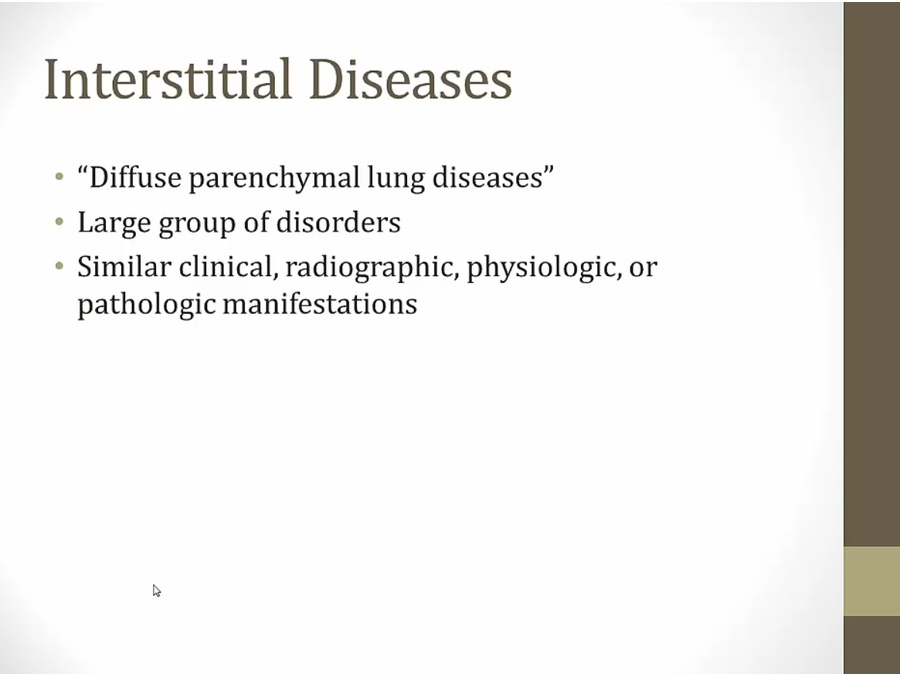
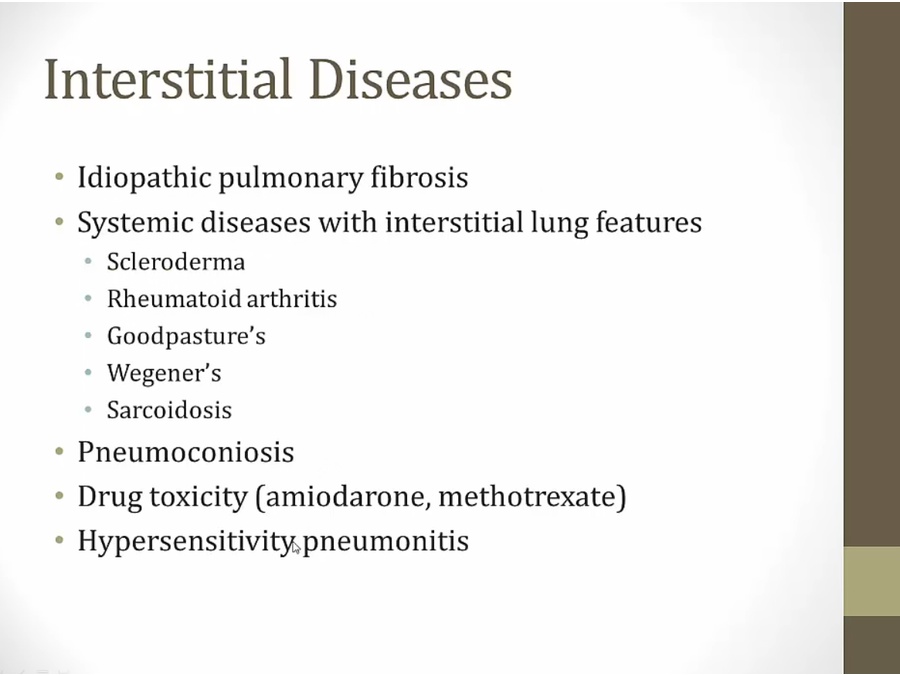
- IPF: fibrous tissues diffusely laid down in lungs, hard to breath
- scleroderma/RA can involve lung
- Goodpasture/Wegener: antibodies involve lung
- sarcoidosis: granulomas inside lung
IPF
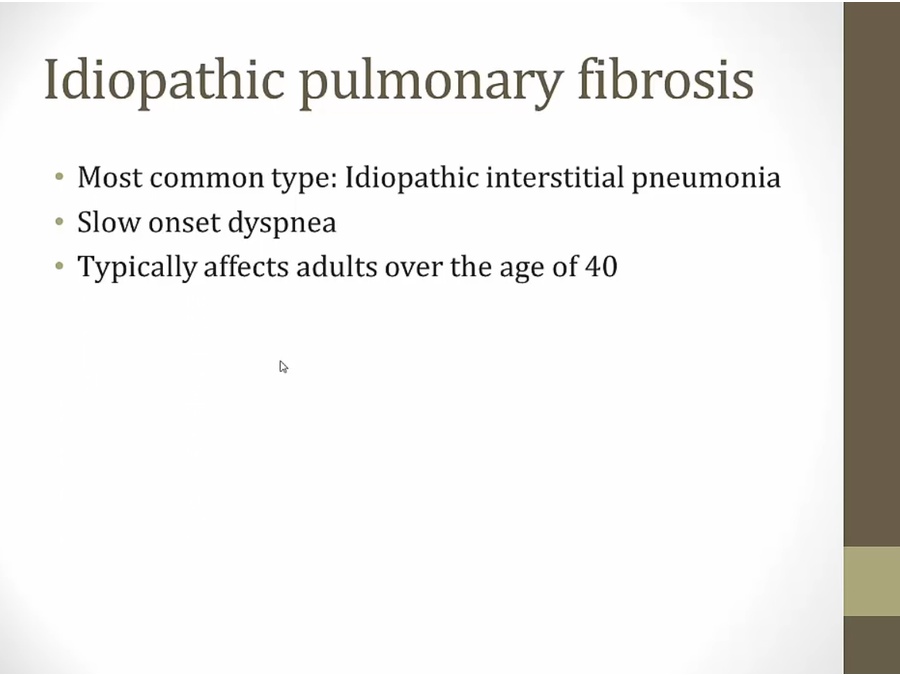
- collection of different disorders
Pneumoconiosis
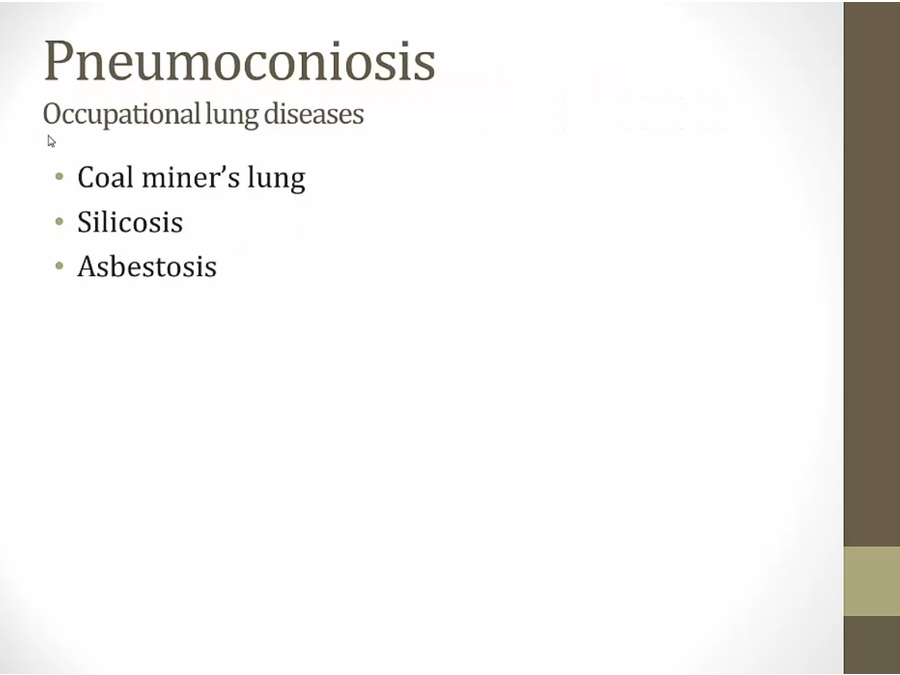
Coal Miner
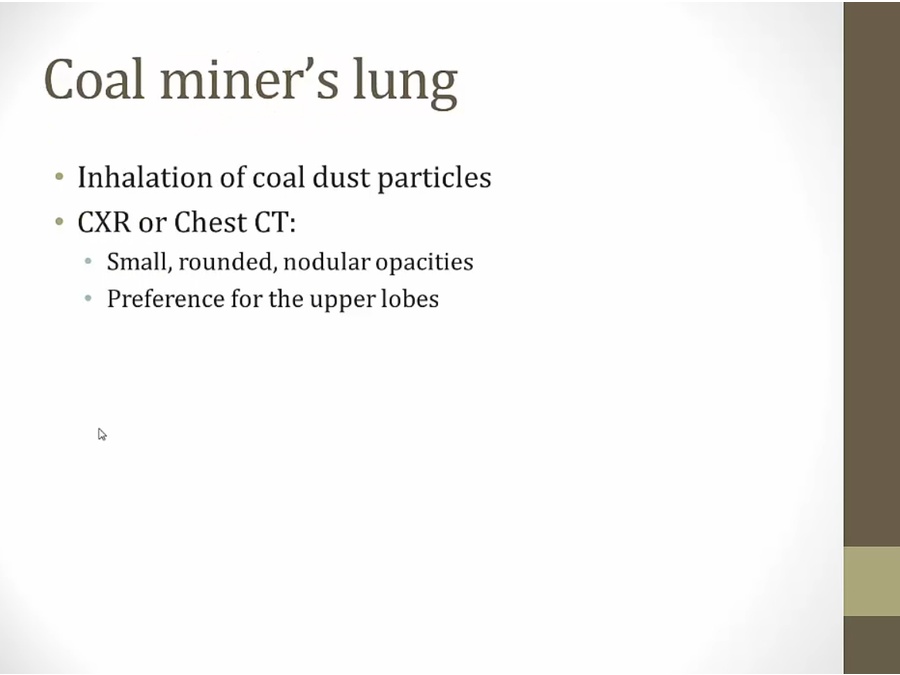
- upper lobe preference
Silicosis
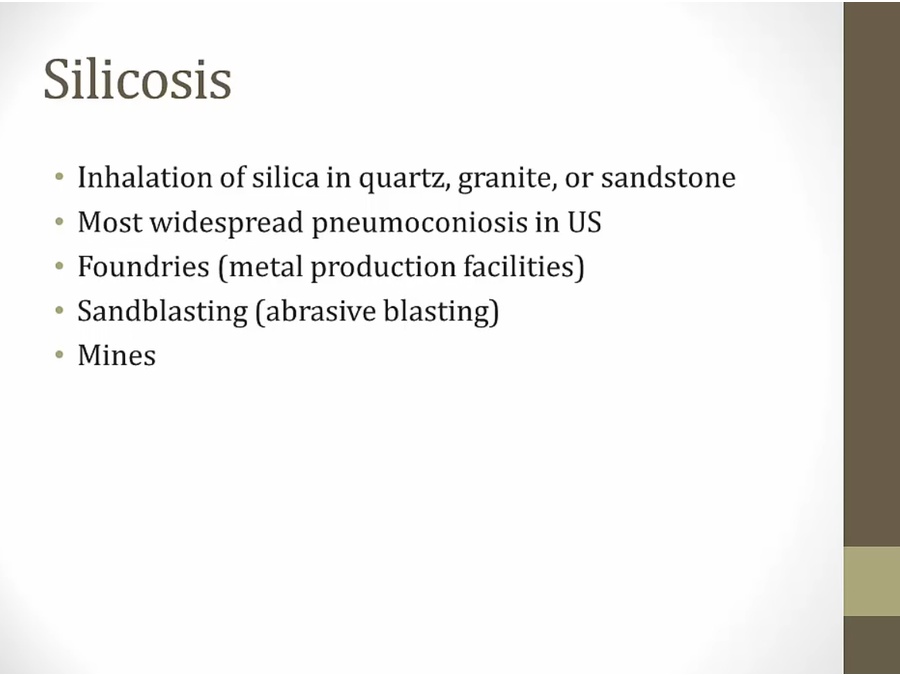
- metal castings made of silica
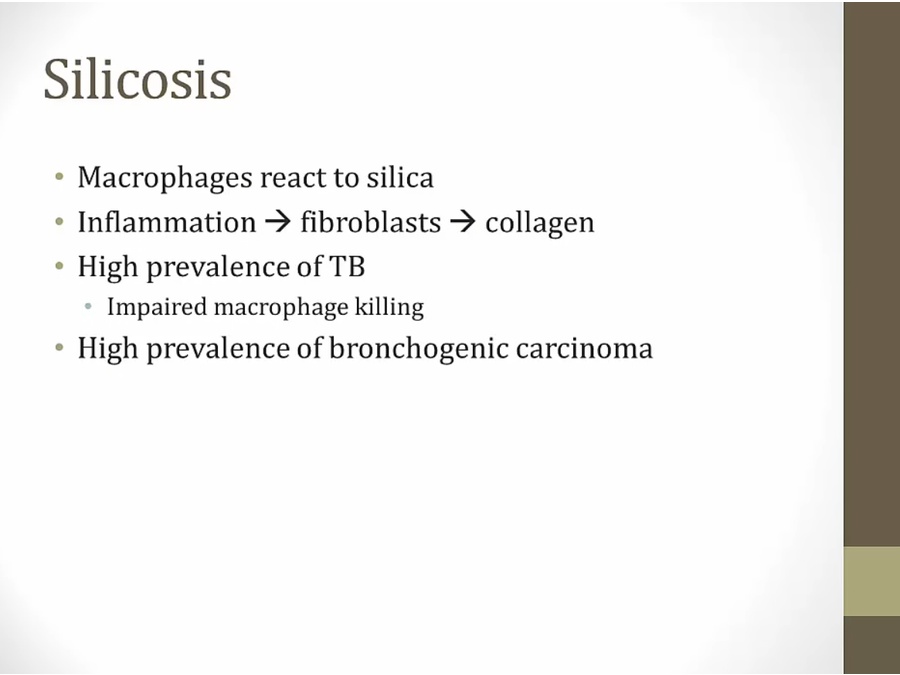
-
high TB prevalence in silicosis
-
Silicosis is distinguished by calcification of the rim of hilar nodes (eggshell calcification) and birefringent silica particles surrounded by fibrous tissue on histology. It has long been associated with increased risk of tuberculosis.
Silicosis impairs the macrophage effector arm of cell-mediated immunity, which is integral to the immune response against mycobacteria. It is thought that macrophage phagolysosomes are disrupted by internalized silica particles, causing release of the particles and viable mycobacteria, which inhibits the immune system's ability to control the infection. This extracellular release of lysosomal enzymes is thought to contribute to alveolar and interstitial lung injury in silicosis. Prolonged exposure of macrophages to silica particles also appears to increase macrophage apoptosis.
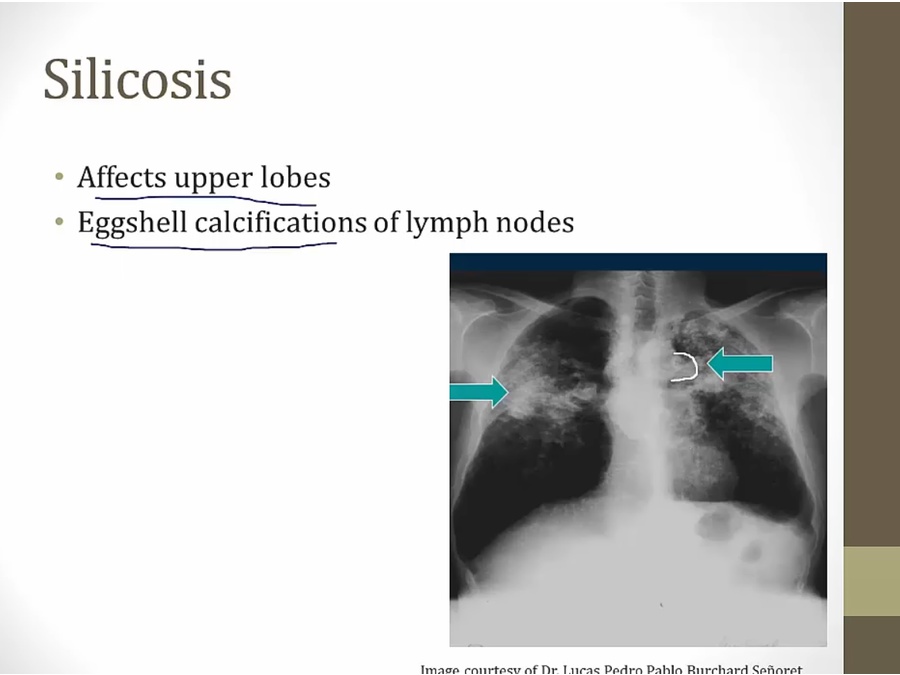
- well circumscribed
Asbestosis
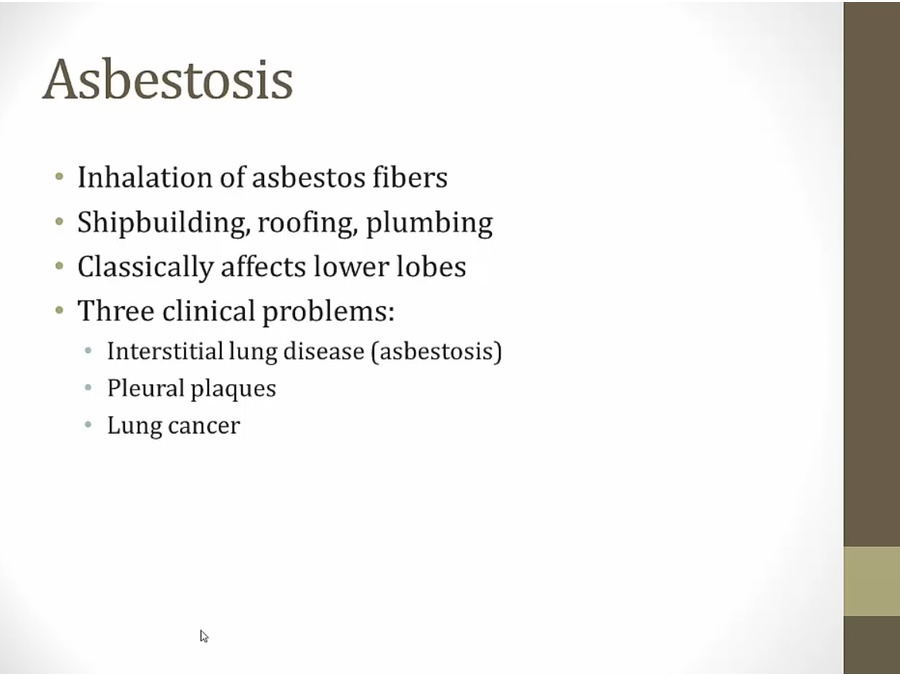
- asbestos: for insulation
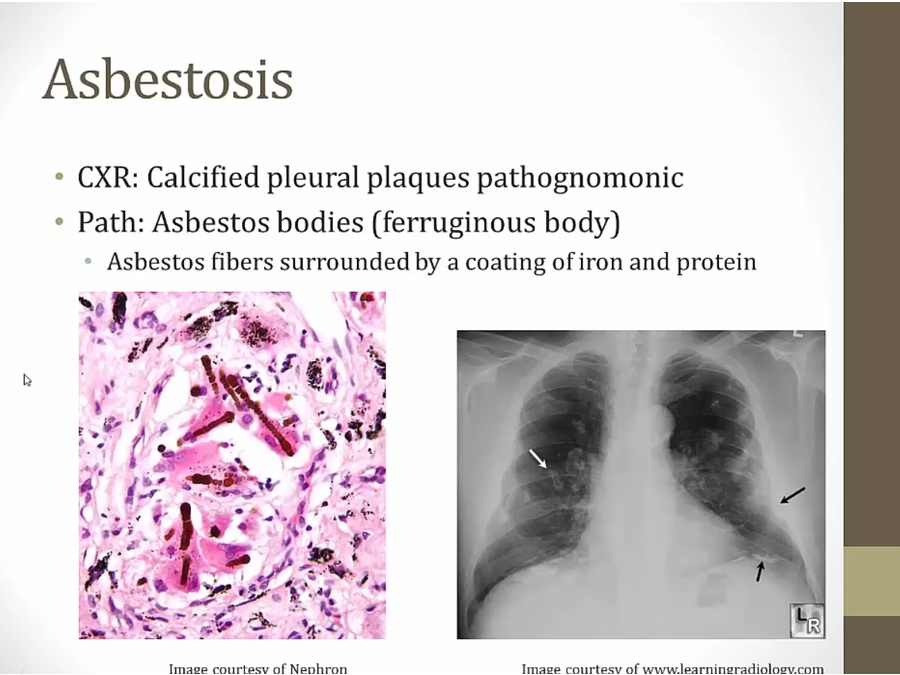
- pleural plaques: white arrow
- white stuff at edges (black arrow)
- see white at edges in occupational worker, think asbestosis
- left: after phagocytosed
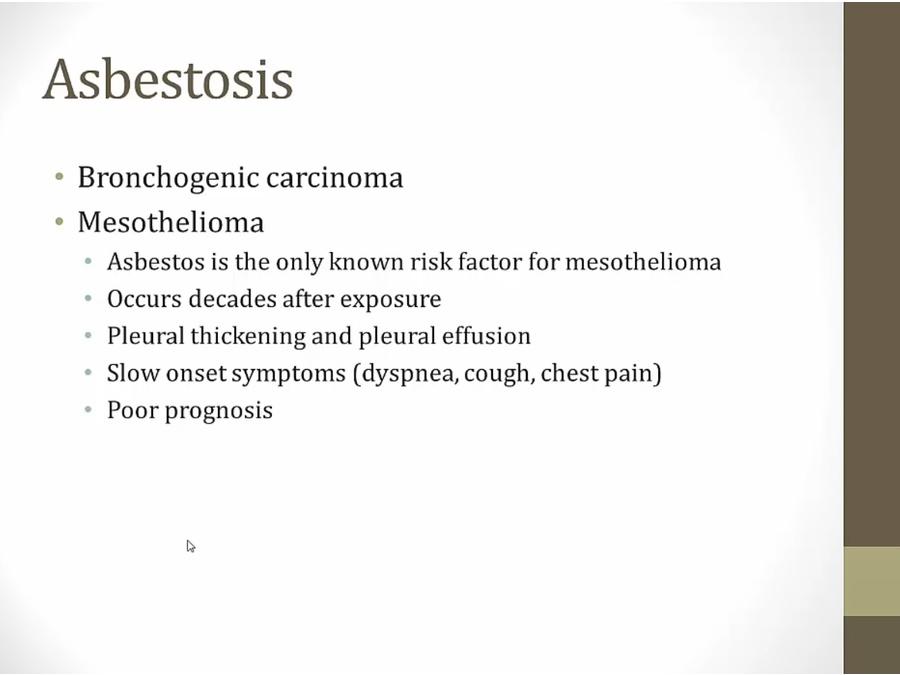
- greatest risk is bronchogenic carcinoma
- see pleural effusion in asbestosis worker, think mesothelioma
- chest pain: pleural involved, stretched
Drug
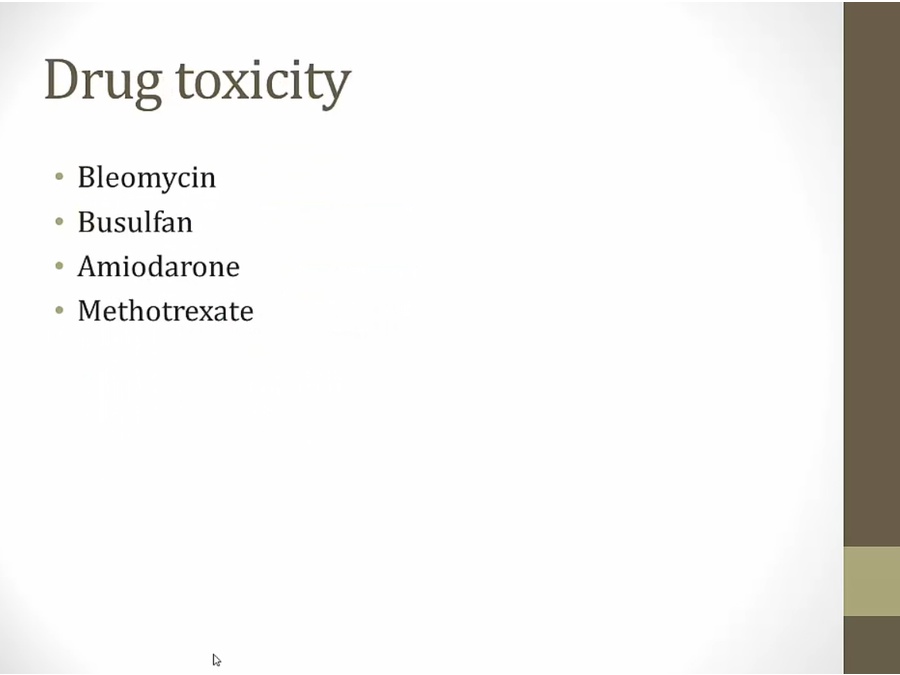

- Fibrotic lung embroidery: amiodarone can cause pulmonary fibrosis
- Tight button: amiodarone induced lung fibrosis causes restrictive lung disease

- Beluga whale: bleomycin (antitumor antibiotic)
- Lung coral: bleomycin can cause pulmonary toxicity (e.g. pneumonitis, pulmonary infiltrates)

- Beautiful sirens: busulfan (cytotoxic alkylating agent)
- Fibrotic lung pattern: busulfan can cause lung toxicity (e.g. acute lung injury, interstitial fibrosis, alveolar hemorrhage)

- Fibrotic lung bonsai: MTX can cause pulmonary fibrosis (restrictive lung disease)
Hypersensitivity
